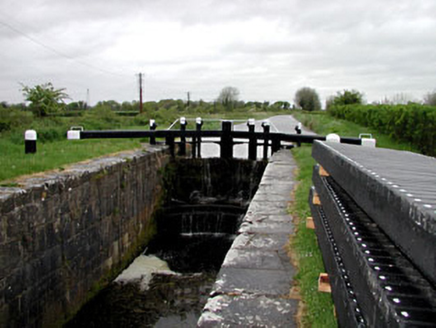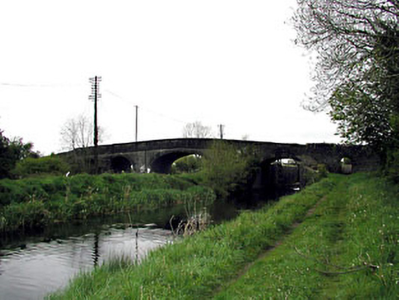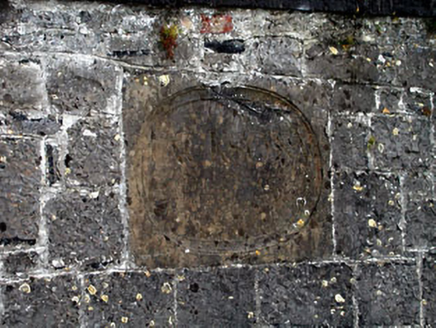Survey Data
Reg No
11900505
Rating
Regional
Categories of Special Interest
Architectural, Historical, Social, Technical
Original Use
Bridge
In Use As
Bridge
Date
1790 - 1795
Coordinates
291793, 237616
Date Recorded
03/10/2002
Date Updated
--/--/--
Description
Three-arch cut-stone road bridge over canal, railway line and stream, dated 1793, with ashlar voussoirs, cut-stone date stone plaque, and single-arch pedestrian bridge to north over stream. Coursed cut-stone walls. Cut-stone date stone/plaque. Cut-stone coping to parapet walls. Three segmental arches of varying form and height. Ashlar voussoirs. Squared rubble stone soffits with traces of render over. Single round arch to north. Cut-stone voussoirs. Squared rubble stone soffits with traces of render over. Sited spanning Royal Canal to north, Midland and Great Western Railway line to centre, and stream to south with pedestrian bridge to north providing access to tow path. Grass banks to canal, to railway line and to stream. Canal lock, c.1795, to north with cut-stone retaining walls having timber lock gates over with integrated pedestrian bridge and possibly retaining early mechanisms.
Appraisal
Jackson’s Bridge is a fine cut-stone bridge that is somewhat unique, spanning the Royal Canal, the Midland and Great Western Railway line and a stream – the bridge is one of a number of bridges on the sections of the Royal Canal and Midland and Great Western Railway line that pass through County Kildare and as such it is of considerable social and historic significance, representing a component of the canal and railway network development in Ireland in the late eighteenth and mid nineteenth centuries, which encouraged the commercialisation and/or industrialisation of the country. The construction of the bridge attests to the high quality of stone masonry traditionally practised in the locality, and retains fine, crisp joints. The construction of the arches that have retained their original shape is of technical or engineering merit. Also of technical interest is the attendant lock to north, which possibly retains early mechanisms.





